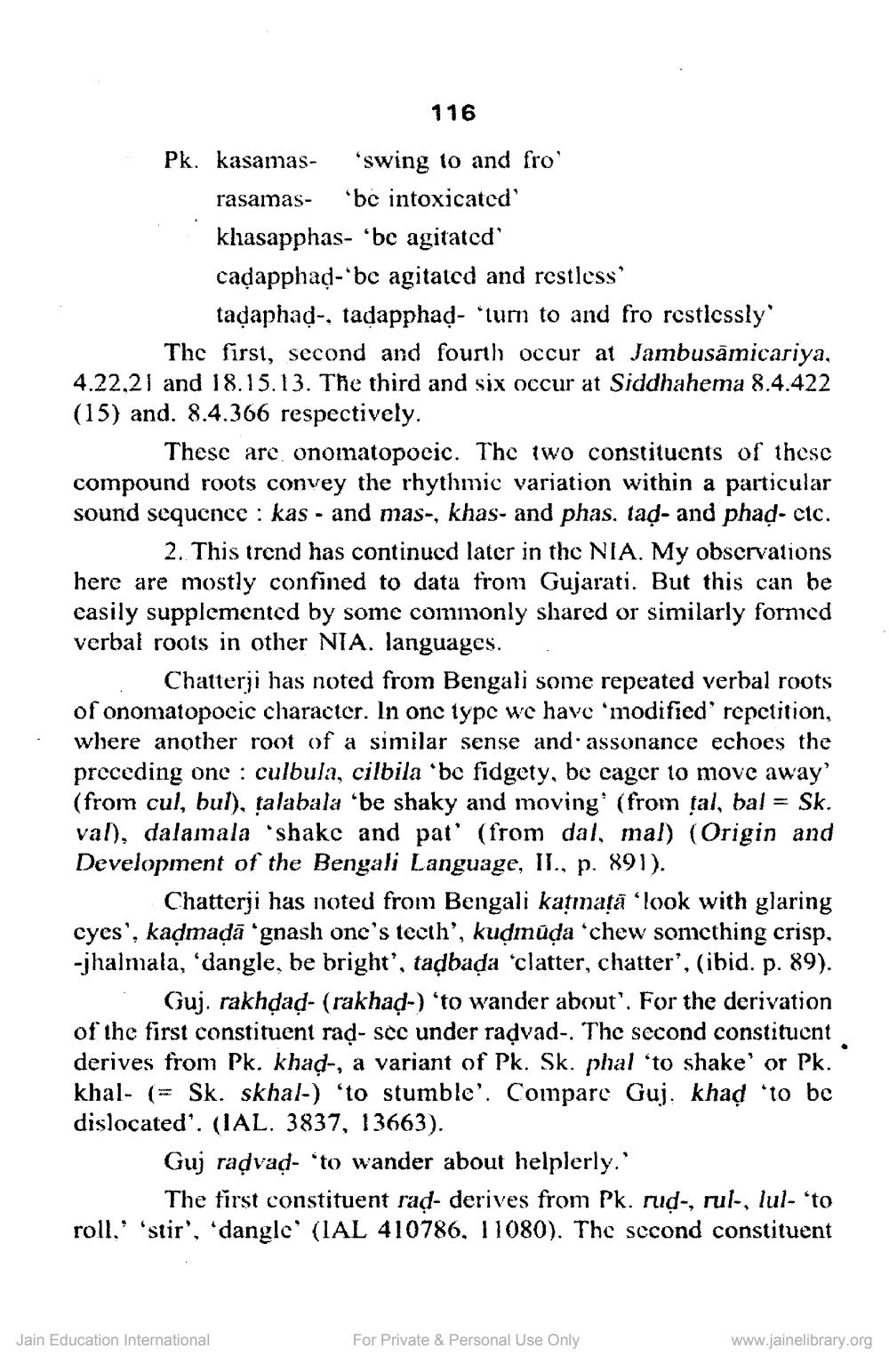________________
116
Pk. kasamas- 'swing to and fro'
rasamas- 'be intoxicated' khasapphas- 'be agitated' cadapphad- bc agitated and restless'
taçaphad-, tadapphad- "turn to and fro restiessly
The first, second and fourth occur at Jambusāmicariya, 4.22,21 and 18.15.13. The third and six occur at Siddhahema 8.4.422 (15) and. 8.4.366 respectively.
These are onomatopocic. The two constituents of these compound roots convey the rhythmic variation within a particular sound sequence : kas - and mas-, khas- and phas, tad- and phad- etc.
2. This trend has continued later in the NIA. My obscrvations here are mostly confined to data from Gujarati. But this can be easily supplemented by some commonly shared or similarly formed verbal roots in other NIA. languages.
Chatterji has noted from Bengali some repeated verbal roots of onomatopoeic character. In one type we have 'modified' repctition, where another root of a similar sense and assonance echoes the prcceding one : culbula, cilbila ‘be fidgety, be cager to move away (from cul, bul), talabala 'be shaky and moving (from tal, bal = Sk. val), dalamala 'shake and pat' (from dal, mal) (Origin and Development of the Bengali Language, II., p. 891).
Chatterji has noted from Bengali katmata 'look with glaring cyes', kadmaļā 'gnash one's teeth', kudmüda chew something crisp. -jhalmala, 'dangle, be bright", tadbada 'clatter, chatter', (ibid. p. 89).
Guj. rakhdad- (rakhad-) 'to wander about'. For the derivation of the first constituent rad- scc under radvad-. The second constitucnt derives from Pk. khad-, a variant of Pk. Sk. phal 'to shake' or Pk. khal- (= Sk. skhal-) 'to stumble'. Compare Guj. khad to be dislocated'. (IAL. 3837, 13663).
Guj radvad- to wander about helplerly.'
The first constituent rad- derives from Pk. ruid-, rul-, lul- 'to roll,' 'stir', 'dangle' (IAL 410786, 11080). The second constituent
Jain Education International
For Private & Personal Use Only
www.jainelibrary.org




